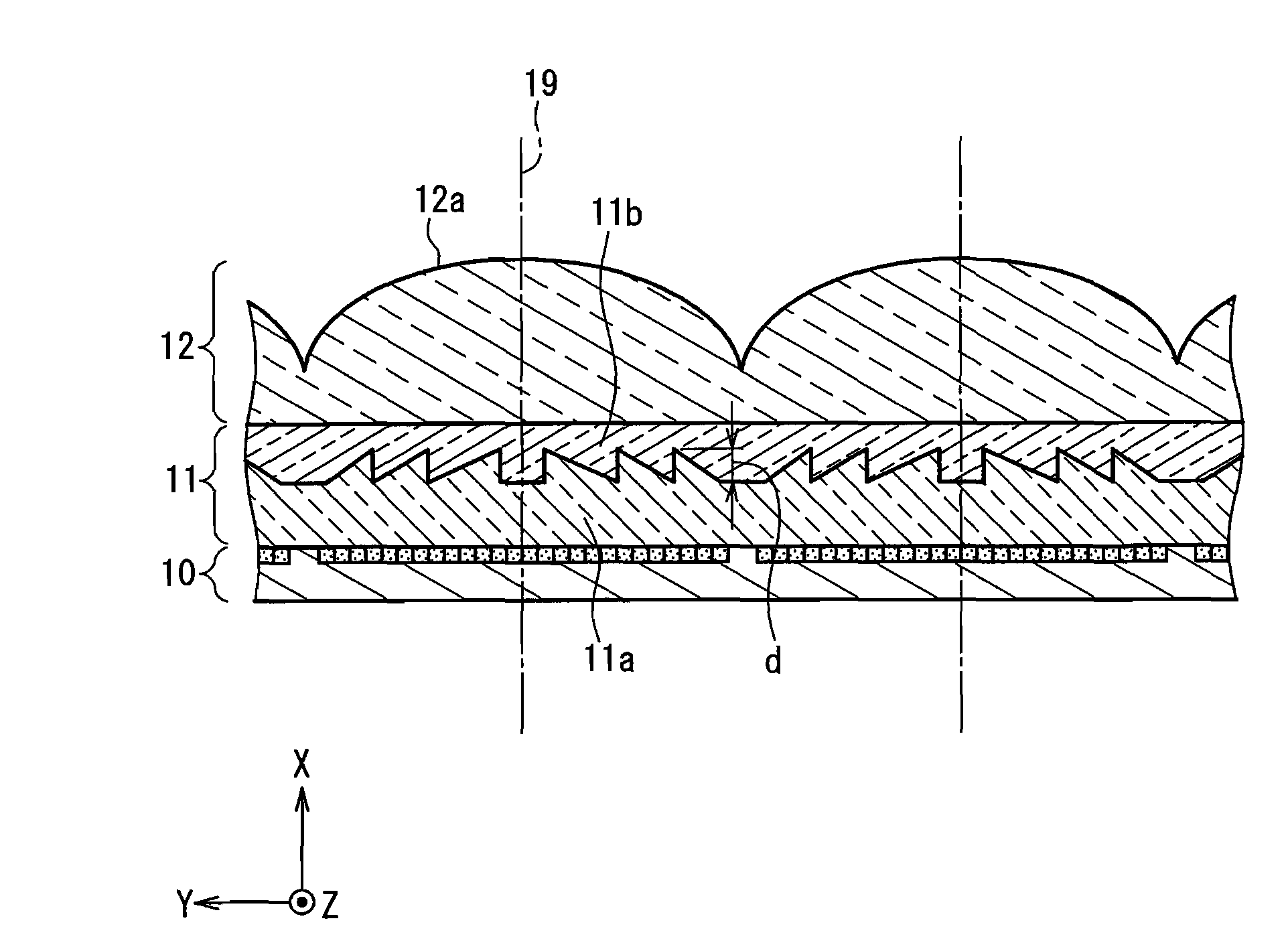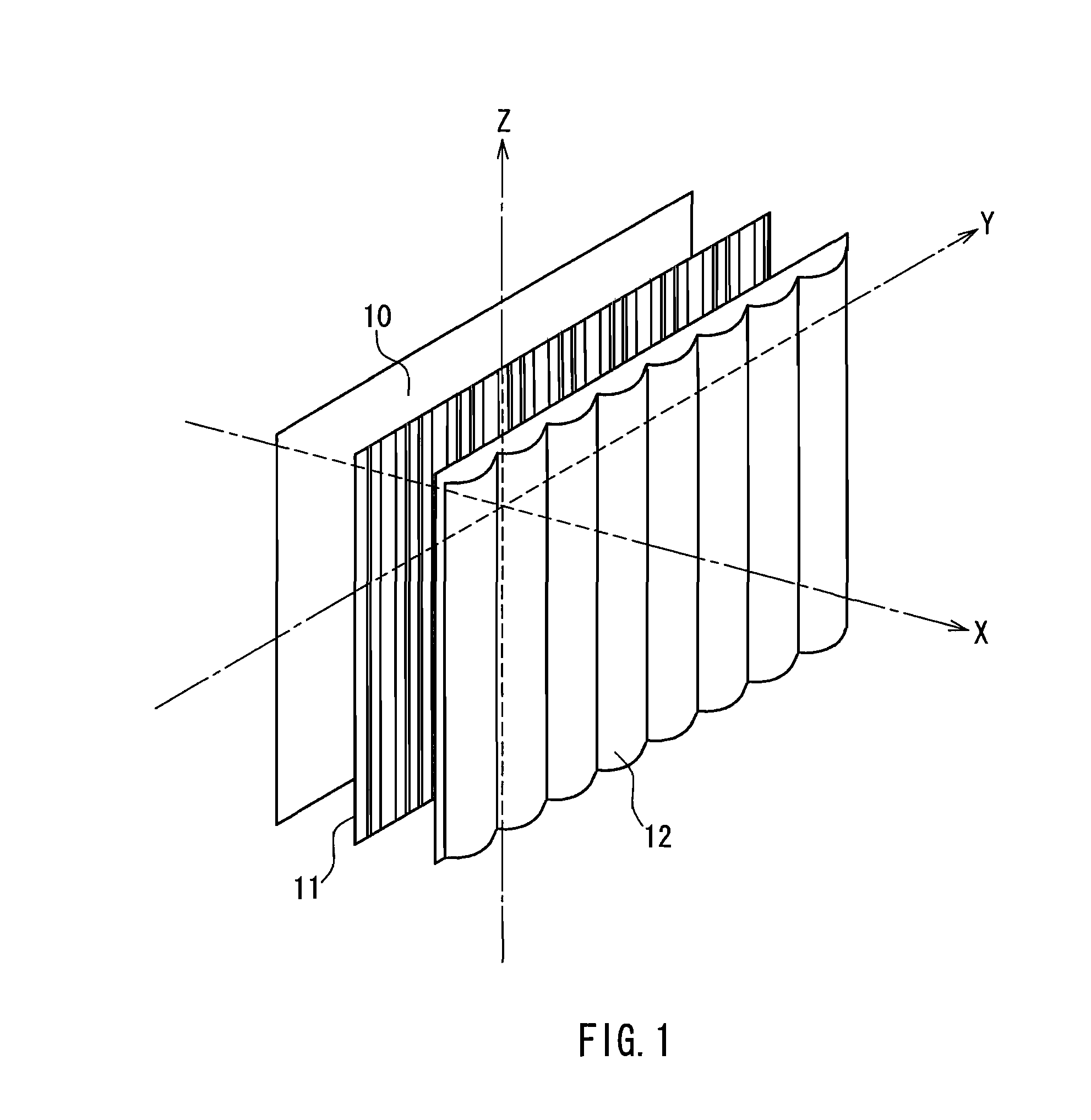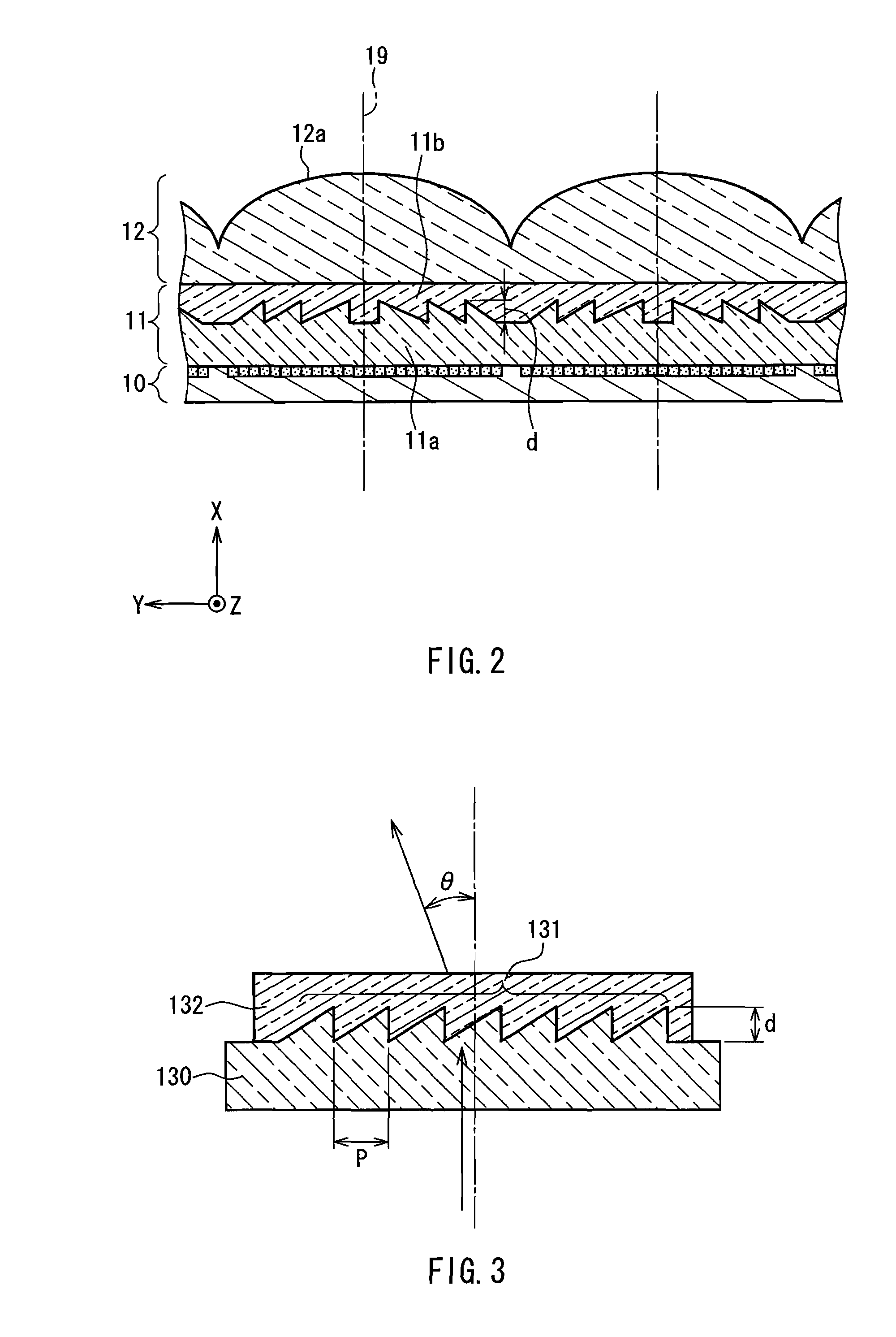Stereoscopic image display apparatus
a stereoscopic image and display apparatus technology, applied in the field of stereoscopic image display apparatus, can solve the problems of limitation of observing position in the y-axis direction, inability to display a stereoscopic image, and inability to use special tools such as glasses
- Summary
- Abstract
- Description
- Claims
- Application Information
AI Technical Summary
Benefits of technology
Problems solved by technology
Method used
Image
Examples
embodiment 1
[0044]FIG. 1 schematically shows the configuration of a stereoscopic image display device according to Embodiment 1. Reference numeral 10 denotes an image display section formed by synthesizing a plurality of original images from different viewing points, 11 denotes a difffraction element array, and 12 denotes a lenticular lens array. In FIG. 1, the components are illustrated separately. However, a part or all of the components may be in close contact with each other, or may be spaced apart from each other by a predetermined distance. The shape of the lenticular lens array 12 and the shape of the diffraction element array 11 can be optimized in accordance with the arrangement of the components. As shown in FIG. 1, a vertical-direction axis and a horizontal-direction axis that are parallel to the image display section are referred to respectively as the Z axis and the Y axis, and an axis orthogonal to the Z axis and the Y axis is referred to as the X axis. In FIG. 1, a plurality of v...
example 1
[0064]An acrylic lenticular lens array 12 in which a plurality of cylindrical lenticular lenses were arranged parallel to the Z axis was used. The arrangement pitch of the lenticular lenses in the Y-axis direction was 2.54 mm ( 1 / 10 inches), and the focal length was 4 mm. Ten CCD cameras were disposed side by side at distances of 24 mm in the Y-axis direction, and images observed from the positions of the thus prepared ten viewing points were captured and synthesized to obtain a two-dimensional image. This two-dimensional image was printed with an inkjet printer and used as an image display section 10. A diffraction element array 11 and the lenticular lens array 12 were placed accurately on the image display section 10 without misalignment, and thus a stereoscopic image display apparatus was produced.
[0065]The diffraction element array 11 was produced by laminating a coating layer 11b made of a urethane acrylate ultraviolet-curable resin (the d-line refractive index after curing was...
example 2
[0068]A lenticular lens array 12 made of cycloolefin (ZEONEX480R, manufactured by Zeon Corporation) and in which a plurality of cylindrical lenticular lenses were arranged parallel to the Z axis was used. The arrangement pitch of the lenticular lenses in the Y-axis direction was 2.54 mm ( 1 / 10 inches), and the focal length was 4 mm. Ten CCD cameras were disposed side by side at distances of 24 mm in the Y-axis direction, and images observed from the positions of the thus prepared ten viewing points were captured and synthesized to obtain a two-dimensional image. This two-dimensional image was printed with an inkjet printer and used as an image display section 10. A diffraction element array 11 and the lenticular lens array 12 were placed accurately on the image display section 10 without misalignment, and thus a stereoscopic image display apparatus was produced.
[0069]A composite material containing a resin mainly composed of polycarbonate and zinc oxide (the composite material had a...
PUM
 Login to View More
Login to View More Abstract
Description
Claims
Application Information
 Login to View More
Login to View More - R&D
- Intellectual Property
- Life Sciences
- Materials
- Tech Scout
- Unparalleled Data Quality
- Higher Quality Content
- 60% Fewer Hallucinations
Browse by: Latest US Patents, China's latest patents, Technical Efficacy Thesaurus, Application Domain, Technology Topic, Popular Technical Reports.
© 2025 PatSnap. All rights reserved.Legal|Privacy policy|Modern Slavery Act Transparency Statement|Sitemap|About US| Contact US: help@patsnap.com



